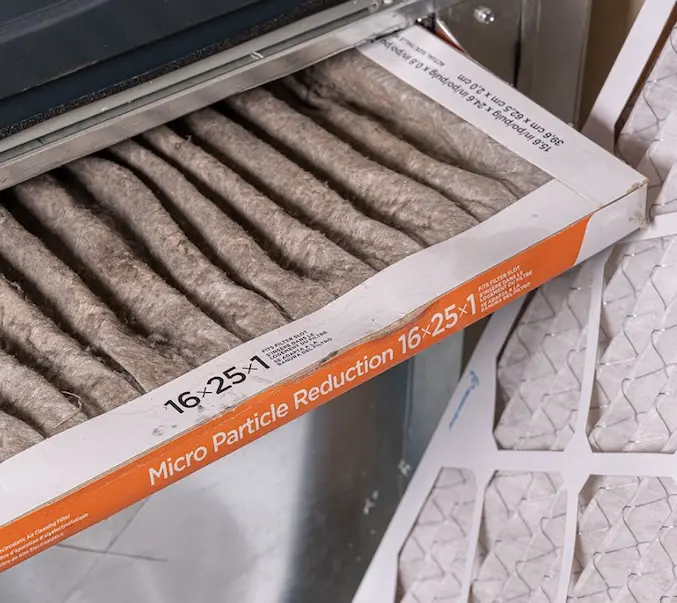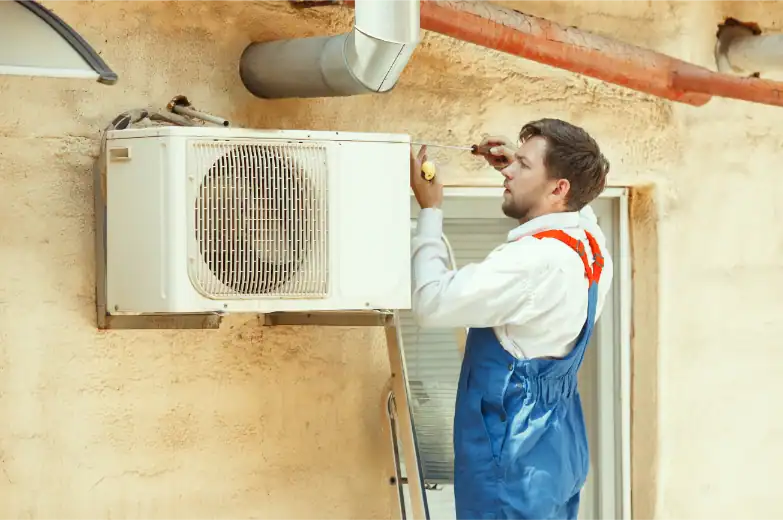Your leaky ducts might be wasting up to 30% of your energy. A poorly maintained AC system uses more power, makes more noise, and tends to break down when you need it most during summer.
Regular maintenance helps your AC unit last longer and run more efficiently. A clean air filter alone can cut your energy costs by 15%. The system works better with improved airflow and less strain. Your thermostat settings can reduce energy bills by up to 30%. This makes it a crucial part of AC maintenance.
The Florida heat is coming, and a complete AC maintenance checklist will keep your home cool without expensive bills. This piece shows you the most important HVAC maintenance tasks. You’ll learn everything from simple inspections to deep cleaning steps. Some tasks might be too complex to handle alone.
Affordable Air & Heat provides same-day air conditioning maintenance checklist services that keep your system running perfectly year-round.
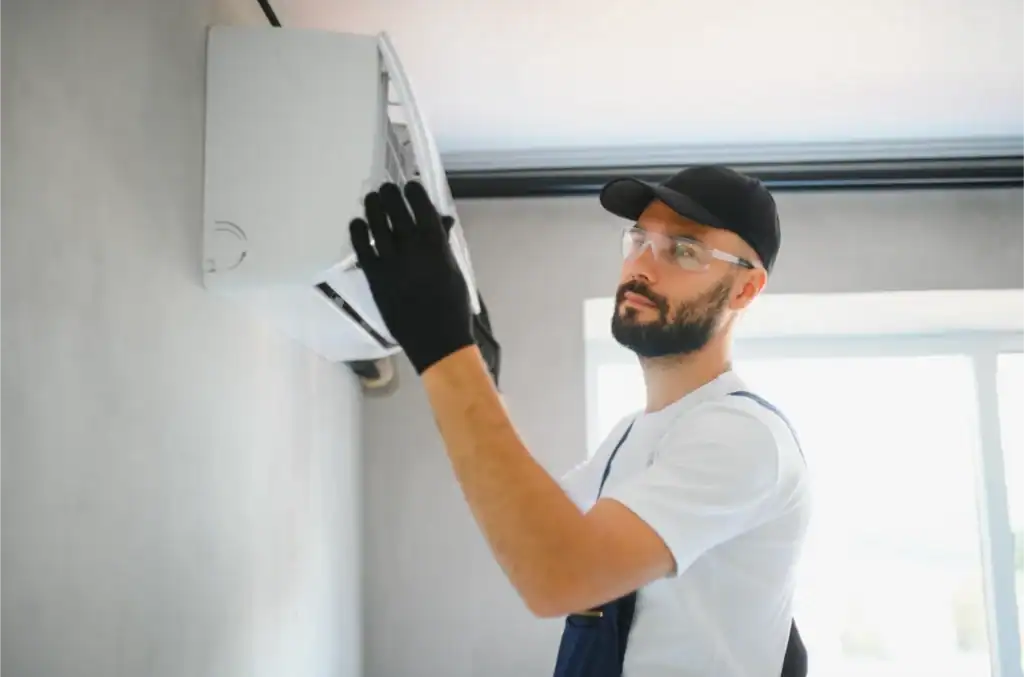
Start With the Basics: What Every Homeowner Should Check
Simple inspections that any homeowner can perform are the foundation of effective AC maintenance. Regular checkups help prevent unexpected breakdowns and can significantly extend your AC unit’s lifespan. By mastering these easy maintenance habits, you’ll keep your system running efficiently all year long.
Clean or Replace Air Filters Regularly
Checking your air filters monthly is one of the quickest ways to ensure your system stays efficient. A clogged filter forces your AC to work harder, increasing energy usage by 5–15%. Replace disposable filters every 30–90 days to maintain peak performance.
How to check if your filter needs replacing:
- Turn off your AC unit completely
- Remove the filter (usually located at the return air duct entrance)
- Hold it up to a light source – if you can’t see light through it, it’s time for a replacement
Dirty filters reduce airflow and spread dust and allergens throughout your home. If you have pets or allergies, consider replacing filters more frequently. Reusable filters can be cleaned by vacuuming them first, then rinsing with a mixture of one part vinegar and one part warm water.
Inspect Thermostat for Accuracy
Your thermostat acts as your AC system’s control center. Even minor inaccuracies can lead to discomfort and higher energy bills.
Experts recommend testing your thermostat once a year. To check for accuracy, tape a reliable thermometer to the wall near your thermostat at the same height. Wait 20–30 minutes, then compare readings. A difference of more than 3 degrees may indicate a calibration issue.
Common thermostat problems include:
- Dust buildup affecting internal sensors (clean gently with a soft cloth)
- Improper placement near heat sources or direct sunlight
- Low or dead batteries (replace every 6 months)
- Wiring issues, which may require professional inspection
Check Visible Wiring and Connections
Many AC issues originate from electrical faults. Visually inspect your system’s accessible wiring for frayed, damaged, or corroded casings. Loose connections can cause your unit to run intermittently—or stop working altogether.
Before inspecting, turn off the power to the unit at the circuit breaker. A tripped breaker may also indicate wiring trouble. While electrical tape can be a temporary fix for minor damage, it’s not a long-term solution.
Handle electrical components with care—wear rubber gloves and use insulated tools when checking any wiring or terminal connections.
Not Sure About Your AC’s Wiring?
You should contact Affordable Air & Heat for same-day service if electrical issues keep occurring or if you’re not comfortable working with wiring.
Our certified technicians can diagnose and fix electrical problems safely — before they get pricey.
Deep Cleaning and Component Care
Your AC needs deep cleaning tasks to perform at its best. These thorough procedures help your system run efficiently during Florida’s hottest months.
Clean Condenser and Evaporator Coils
Dirty coils make your system work harder and reduce efficiency by a lot. Your condenser coils (outdoor unit) need cleaning at least twice yearly, especially after fall when debris builds up. Switch off power at the breaker, then remove the top and side covers. A soft brush and vacuum will clear debris. You can straighten bent fins with a fin comb. Spray with manufacturer-approved coil cleaner and rinse gently from inside out.
Your indoor evaporator coil needs cleaning too. A soft brush removes debris before you apply foaming cleaner. Regular coil cleaning can boost system efficiency up to 40%.
Flush the Condensate Drain Line
Monthly drain line flushing helps avoid expensive backups. Mix ¼ cup of vinegar with 2 cups of water and pour it through the access point (T-shaped vent with PVC cover). Let it sit for 30 minutes. This process kills mold, algae, and bacteria that create clogs.
Lubricate Moving Parts Like Fan Motors
Fan motors need lubrication at the start of cooling season to prevent early failure. Switch off power first, then find oil ports on the motor (usually two or three). Add 15 drops of high-quality ISO 32 turbine oil per bearing. Don’t use detergent-containing oil because it harms bearings.
Inspect Ductwork for Leaks or Blockages
Leaky ducts cause about 25% of air loss. Look at accessible ductwork in attics, basements, or crawlspaces for tears, disconnections, or blockages. Joints and elbows need extra attention since leaks happen there often.
Seasonal AC Maintenance Plan
A year-round AC maintenance schedule will keep your system running smoothly as seasons change. You’ll avoid breakdowns that can get pricey and make your system last longer by doing this seasonal AC maintenance checklist.
Spring: Pre-Cooling System Check
Spring gives you the perfect time to get your AC ready. You should book a professional pre-season inspection as temperatures start climbing. This helps spot problems before your system has to work at full blast in summer. Energy experts say a well-maintained AC system can cut energy costs by 5–40% based on the system type.
Your professional tune-up should start with these basics:
- Tightening electrical connections
- Cleaning and inspecting coils
- Checking refrigerant levels and pressures
- Verifying operating temperatures
Your outdoor unit needs attention too. Clear any debris around it and clean it well with a garden hose. Keep all plants at least 18 inches away from the unit.
Summer: Monitor Performance and Airflow
Summer pushes your system to its limits. Keep an eye on your energy usage because sudden spikes usually mean something’s not working right.
Your summer maintenance checklist should look like this:
- Check filters every month instead of each season
- Make sure air flows well through all vents
- Watch out for strange noises that could mean mechanical problems
Fall: Prepare for Heating Mode (If HVAC)
Your system needs to get ready for heating mode in fall. The best time to schedule maintenance is before the first cold weather hits.
Fall maintenance tasks should focus on checking gas connections, heat exchangers, and ignition switches if you have a gas furnace. You’ll also want to put in a new filter and test how your thermostat works in heating mode.
Winter: Minimal Use but Still Inspect
Your AC system needs protection even if you barely use it in winter. Florida’s mild winters mean you might not have to cover your outdoor unit, but you should still clear debris from it weekly.
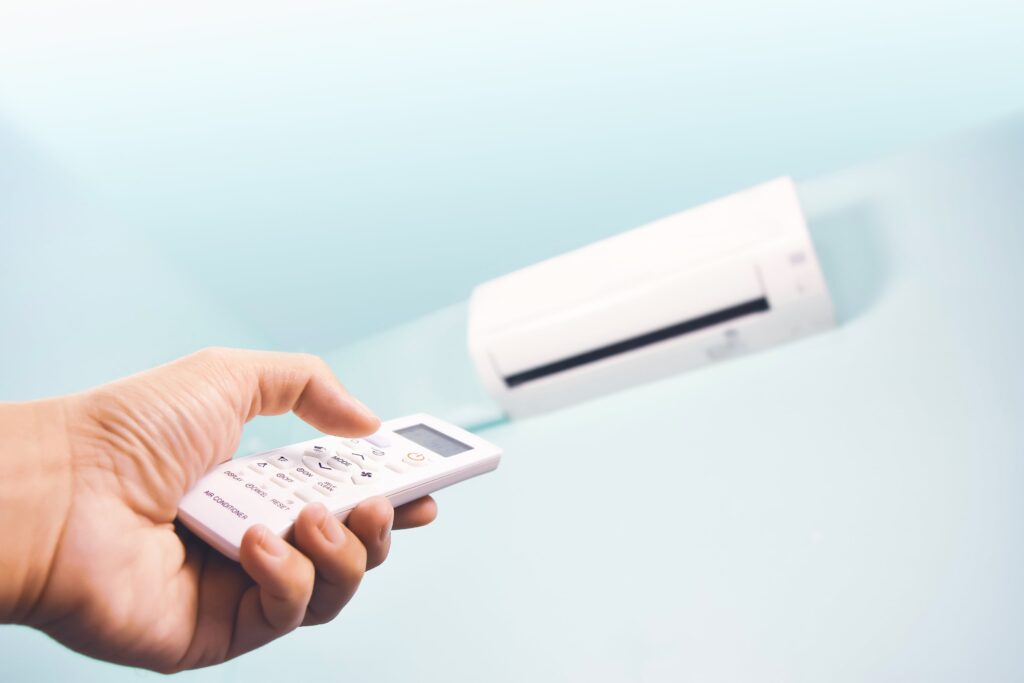
Final Checks Before the Heat Hits
Your AC system needs seasonal maintenance and final pre-summer checks to avoid pricey breakdowns during peak heat. These critical inspections will keep your system running at its best when you need it most.
Test System Operation and Airflow
Start by testing your AC’s performance. Turn it on and watch how fast it cools your home. Good airflow optimizes efficiency. Your system works harder with restricted airflow, which can boost energy use by up to 15%.
The quickest way to check airflow:
- Hold a tissue or lightweight paper near each vent – it should stay firmly in place
- Look for vents free from furniture or curtain blockages
- Keep return air grilles clean and clear
Weak or uneven airflow from vents shows your AC system doesn’t work properly. Clogged filters, blocked ducts, or a faulty blower motor could be the cause.
Check Refrigerant Levels and Pressure
Refrigerant absorbs indoor heat and releases it outside. Your system needs the right amount to cool effectively. Too much or too little refrigerant reduces efficiency, raises energy costs, and shortens equipment life.
Safety demands professional technicians check refrigerant pressure with specialized gauges. They’ll confirm if pressure stays within the 8–28 PSI range. Low pressure usually means leaks that need immediate expert attention.
Listen for Odd Sounds or Short Cycling
Your AC unit shouldn’t make unusual noises. Clicking at startup might show capacitor problems, while hissing often reveals refrigerant leaks. Buzzing typically points to electrical issues that need quick fixes.
“Short cycling” — when your AC turns on and off frequently — puts extra strain on the system, lowering efficiency and comfort. If your unit shuts off before reaching your desired temperature, it’s time to get it checked.
Review Energy Usage for Spikes
Watch your energy bills for sudden increases. A big jump usually means your AC system isn’t running well. Regular checks help spot efficiency issues early, keeping your system running smoothly all summer.
Book Your Same-Day AC Service with Affordable Air & Heat
Regular AC maintenance is crucial for comfort during Florida’s hottest months. A complete checklist helps prevent common problems before they become costly. Regular cleaning of filters, deep cleaning of parts like condenser coils and drain lines, and a checkup before summer are essential to avoid unexpected breakdowns.
Professional maintenance costs less than emergency repairs, and studies show well-maintained AC systems last 40–60% longer than neglected ones.
Schedule Your Tune-Up Today
Affordable Air & Heat offers complete AC maintenance services across Florida. From simple inspections to complex component care, we’ve got you covered.
Call (954) 987-9943 for professional maintenance that keeps your home comfortable year-round at a reasonable cost.
Q1. How often should I replace my AC air filter?
It’s recommended to check your air filter monthly and replace it every 30–90 days. If you have pets or allergies, you may need to replace it more frequently. A clean filter can improve your AC’s efficiency and reduce energy costs.
Q2. What are signs that my AC needs maintenance?
Q3. Can I clean my AC coils myself?
While it’s possible to clean condenser coils yourself, it’s often best to have a professional do it. For the outdoor unit, a professional will turn off power, remove debris, and gently clean with a soft brush and manufacturer-approved cleaner. Indoor evaporator coils require more careful handling.
Q4. How can I improve my AC's efficiency?
Regular maintenance is key. Clean or replace filters regularly, keep the outdoor unit clear of debris, ensure proper airflow through vents, and schedule professional tune-ups. Also, using a programmable thermostat can help optimize your AC’s performance.
Q5. Is professional AC maintenance worth the cost?
Yes, professional maintenance is typically a wise investment. It can prevent costly breakdowns, extend your system’s lifespan by 40–60%, and improve energy efficiency, leading to lower utility bills. The cost of regular maintenance is usually far less than emergency repairs.
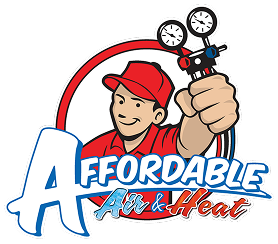
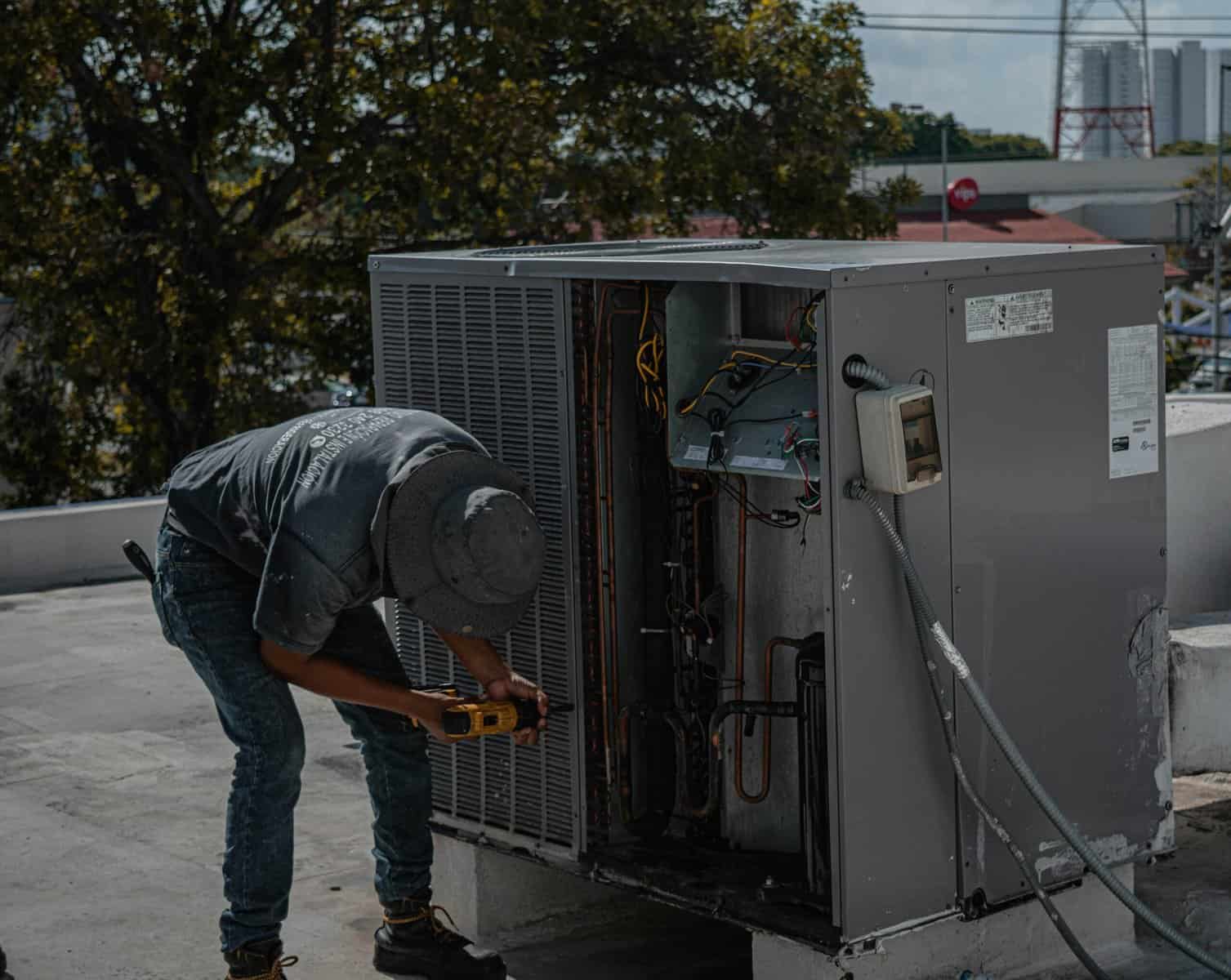
![Mini Splits vs Central Air: Which Saves More in Florida? [2025]](https://affordableair.com/wp-content/uploads/2025/09/mini-air-vs-central-air.png)
